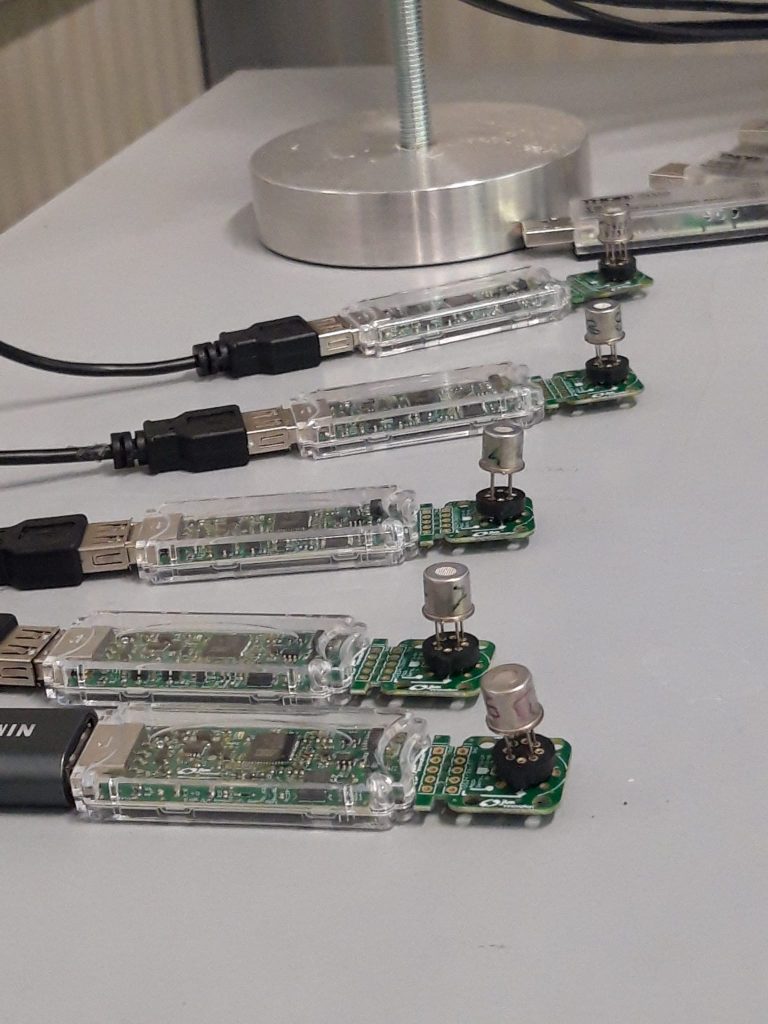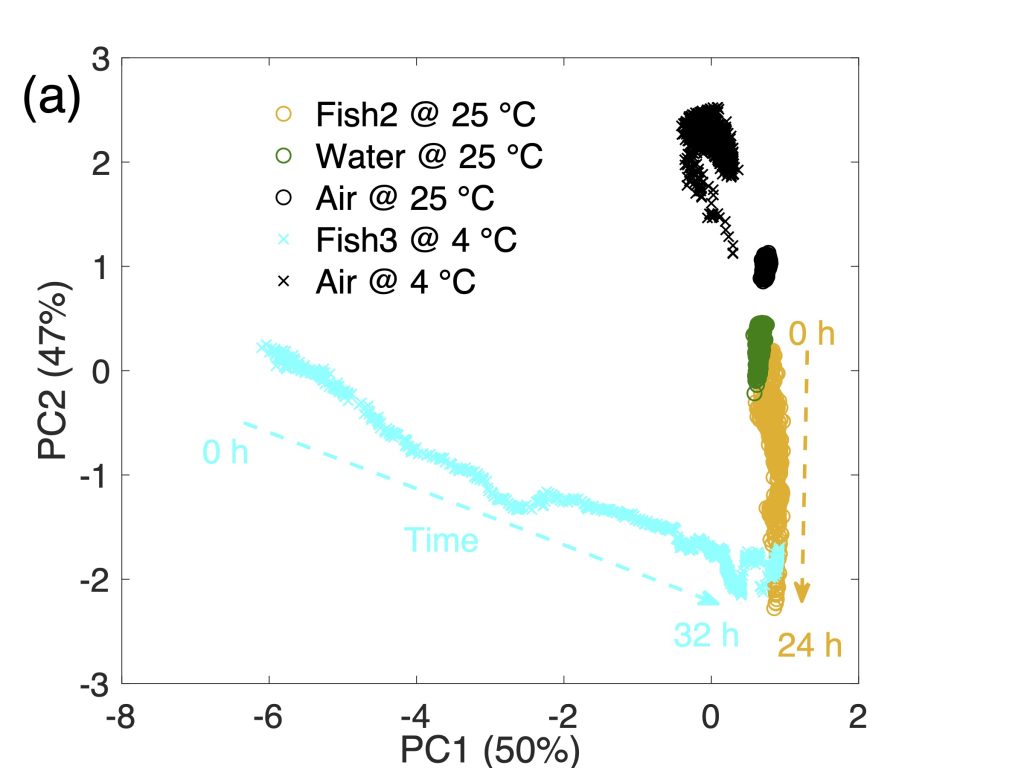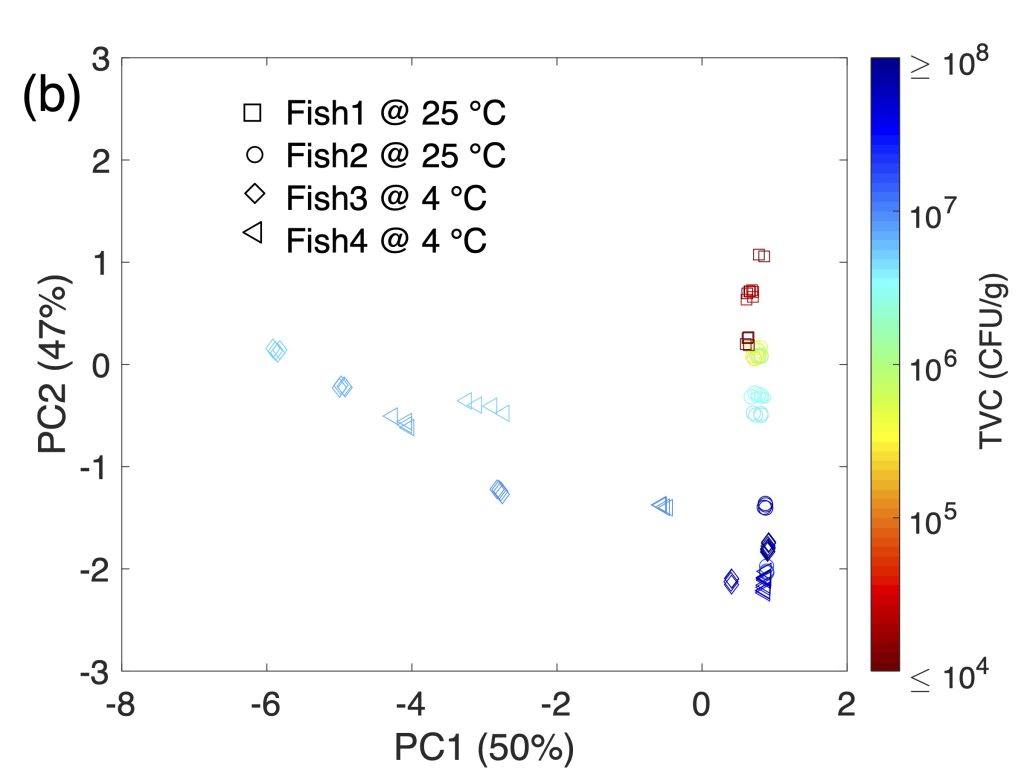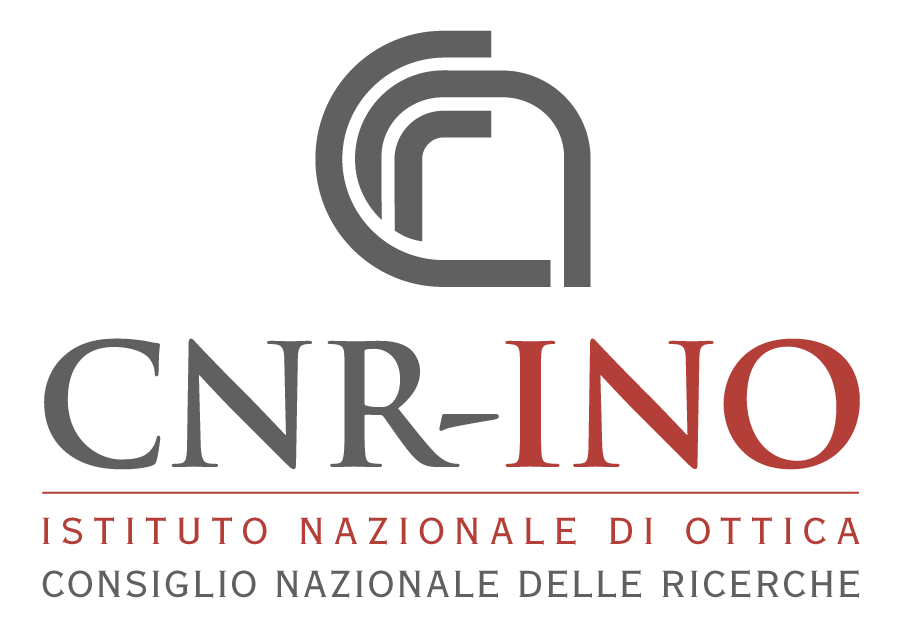Principal investigator: Andrea Ponzoni (andrea.ponzoniATino.cnr.it)
At PRISM Lab we develop olfactive technologies based on the electronic nose (EN) principle.
In its original configuration, an EN is composed by an array of unspecific gas-sensors, each one having its own partial specificity. Selectivity is achieved through a pattern recognition software that allows to retrieve the relationship between the array response and the measured sample/condition.
Volatiles developed during physical, chemical, biological processes often contains important information about the processes themselves, hence olfactive technologies may revel very useful in many applicative fields.
We use miniaturized plug-and-play commercial electronics with USB Interface to control commercial and custom metal oxide gas sensors with modulated working temperature [1]. This approach allows us to achieve good selectivity and reduced device size. Based on these commercial platforms, we develop the electronic nose for specific applications. The target may be one or a few target volatiles in a complex atmosphere [2], but most of all we focus on applications in which the target is a complex blend of volatiles, i.e. an odor [3], which are often the case in the agri-food and medical fields.

Electronic noses at PRISM Lab.
In the following example, we developed an electronic nose system to track the spoilage of fresh fish samples on the basis of their odor, observing a good correlation between the EN signal and the total viable count (a standard microbiological technique used to quantify the bacterial population).
We carried out tests at different temperatures in order to simulate the best storage conditions as well as deviations from these that may be encountered in everyday life. Interestingly, despite the remarkable effects of temperature on the volatiles released by the food samples, the EN reveled able to detect the edibility threshold whichever the storage temperature. Full details are available in our open access article [3].


Principal component analysis (PCA) score plot showing the correlation between the EN signal and the microbiological characterization (total viable count, TVC). Reprinted from [3].
References:
- Soprani, M.; Zambotti, G.; Ponzoni, A. Response Times of Metal-Oxide Chemiresistors: Comparison Between the Isothermal and Temperature Modulation Modes. J. Nanosci. Nanotech. 21 (4), 2668-2674.
- Ponzoni, A.; Depari, A.; Comini, E.; Faglia, G.; Flammini, A.; Sberveglieri G. Exploitation of a low-cost electronic system, designed for low-conductance and wide-range measurements, to control metal oxide gas sensors with temperature profile protocols. Sens. Actuators B Chem. 2012, 175, 149–156.
- Zambotti, G.; Capuano, R.; Pasqualetti, V.; Soprani, M.; Gobbi, E.; Di Natale, C.; Ponzoni, A. Monitoring Fish Freshness in Real Time under Realistic Conditions through a Single Metal Oxide Gas Sensor. Sensors 2022, 22, 5888.

